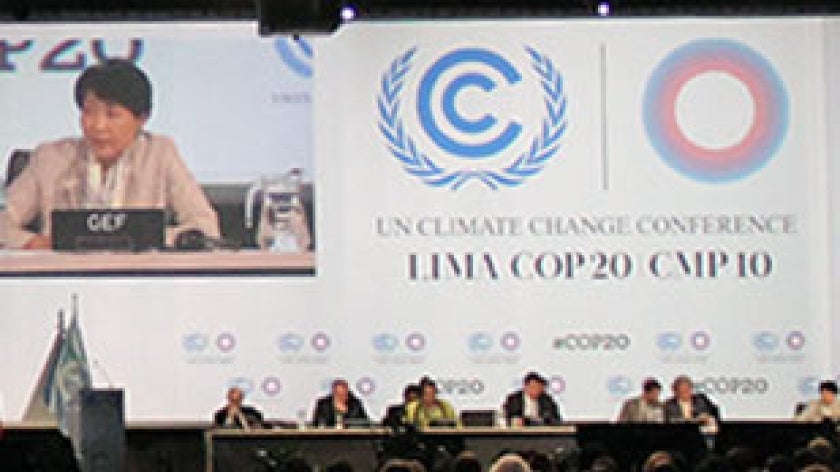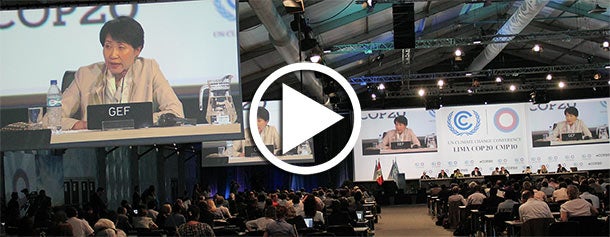
Lima, 9 December 2014 - Today the GEF CEO, Naoko Ishii, addressed the delegates gathered for the "High Level Ministerial Dialogue on Climate Finance: Towards an Articulated Vision for Climate Finance" at the COP20 in Lima.
The dialogue provided a unique opportunity for Ministers to engage with each other to reflect on how the current institutional arrangements and the information tools for climate finance under the UNFCCC are providing countries with the necessary reassurance that international public finance is flowing and is achieving its intended purpose and to further discuss their potential for scaling up funding and investments by engaging different actors.

Remarks by Naoko Ishii for
High Level Ministerial Dialogue on Climate Finance: Towards an Articulated Vision for Climate Finance – How can it support ongoing efforts to scale-up funding and investments?
9 December 2014
Excellences, distinguished guests, friends,
I would like to congratulate the Peruvian Presidency for organizing this crucial dialogue about climate finance.
Climate finance is critical for at least two reasons. First, climate finance is critical for the global climate agreement that we are all working hard to make a reality next year in Paris. Second, climate finance is critical to catalyze the action on the ground both for mitigation and adaptation that is essential if we are to be able to achieve the transformational change towards low-carbon, resilient development.
Earlier this year GEF was replenished with the highest amount ever. Together with ongoing support for our dedicated adaptation funds, LDCF and SCCF, US$3 billion is available for climate finance for the next four years. Together with the US$10 billion capitalization of the Green Climate Fund (GCF) we are off to a good start. I would like to extend my congratulations to all parties gathered here today for this achievement.
Looking towards Paris, it is an important priority for all countries to complete their Intended Nationally Determined Contributions in accordance with the guidance that I hope will be agreed here in Lima. The GEF has already provided funding to support INDCs in 18 countries, and we stand ready to rapidly provide more funding to other countries who request it.
It is also critical that we rapidly begin to catalyze climate action on a large scale. On the mitigation side, we need a massive transformation in the key systems of our economy—in our energy systems, in our land-use systems and in our cities. On the adaptation side, we see strong leadership from countries to address the urgent needs that are growing by the day. From the GEF's side, our message is clear: the GEF is fully prepared to deploy its resources and expertise to upscale action on mitigation and adaptation.
We should not lose sight of the fact that public funds for climate finance are only a small fraction of the total finance that is needed. This makes it extremely important that we use these scarce public funds as effectively as possible, and that we provide seamless, comprehensive support to countries. We need to create the strongest possible climate finance architecture that builds on the unique strength of each of the existing funding mechanisms. The discussions here in Lima represent a vital step in that direction.
Before I close, allow me to refer to a conversation I had with our Peruvian hosts yesterday, where the point was made that climate change solutions are closely linked with degradation of land, declining health of oceans, forest and biodiversity loss, and food and water stress, which directly affects the day to day lives of many local communities. This point is very close to my heart because we, in the GEF, see a growing demand from countries and communities for integrated approaches for improvements of the ecosystem as a whole and in this way deliver more effective solutions to climate change.
Let me conclude by saying that it is a pleasure to serve this convention, which we have been doing to the best of our ability under your guidance for the past 20 years. We now have a new sister in the financial mechanism of the convention, and I am sure that by working together we will become an even stronger and more effective catalyst for transformational change to address climate change.